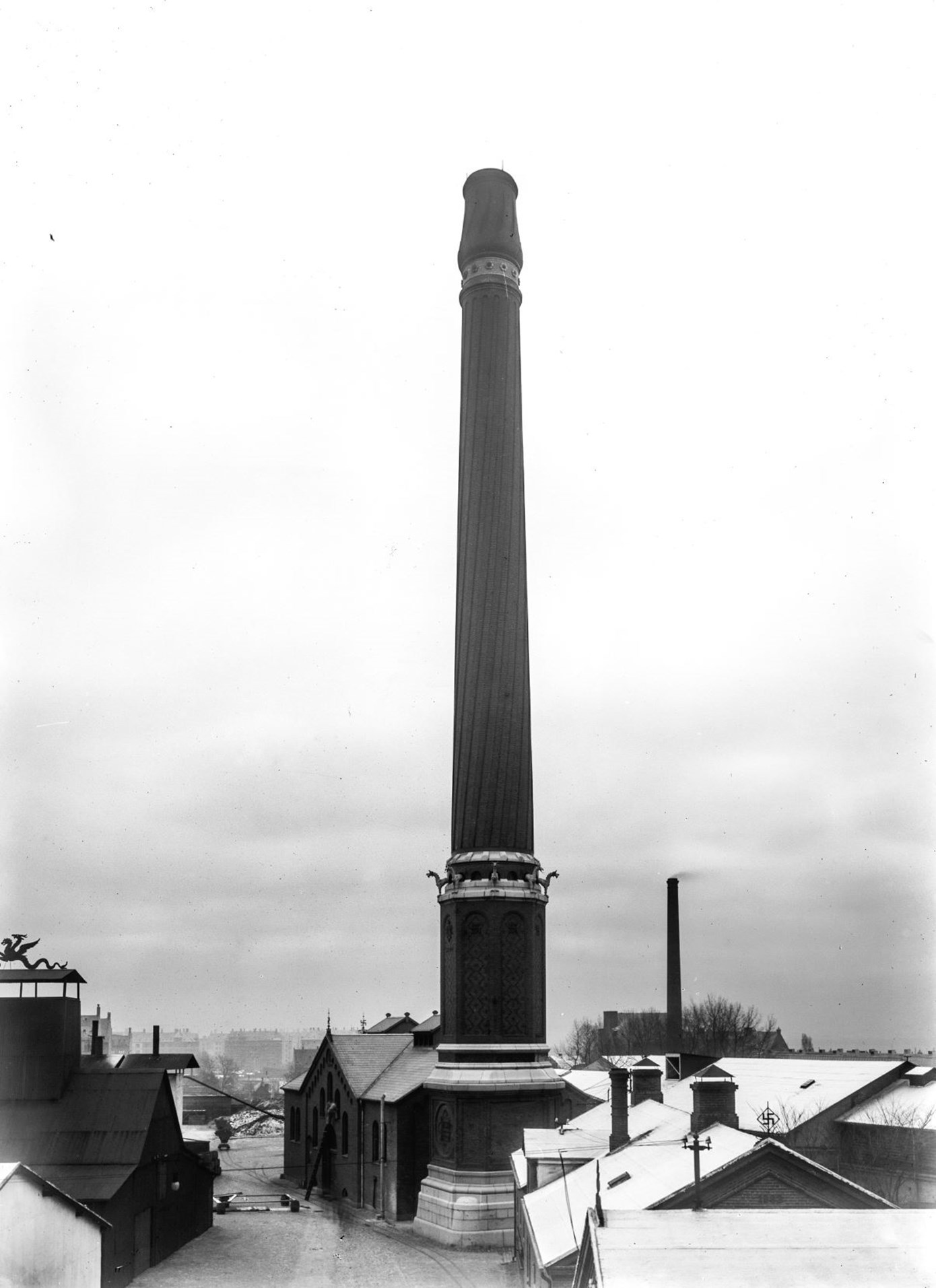
 The Carlsberg site in Copenhagen
The Carlsberg site in Copenhagen
The Carlsberg site in Copenhagen still looks almost as in 1847
For J.C. Jacobsen and son Carl, the look of the Carlsberg estate was also very important.
Especially Carl Jacobsen believed that attractive surroundings like art could raise a man's spirit. He wanted to explore new architectural styles for their industrial buildings and strove to create an aesthetic brewery.
For example, Carl Jacobsen wanted to prove that a factory's chimney could be a work of art.
He had Carlsberg's famous twisting chimney built in 1900, and still today, you can see the 56 metre-high Winding Chimney featuring motifs of Egyptian lotus flowers. To this day, it remains one of the true pearls of industrial architecture.

The Winding Chimney can still be seen at the Carlsberg site in Copenhagen

J.C. Jacobsen's villa
Just a stone's throw from the brewery is J.C. Jacobsen's own villa - an outstanding monument to the nineteenth-century architecture and landscape gardening.
Carl Jacobsen's villa
Not far from his fathers villa is Carl's villa. As an eager cultural enthusiast, Carl was not only concerned with the look of the industrial buildings around The Brewery. He also took pride in the beauty of his own home.


The Elephant Gate
Carl Jacobsen's elephant tower is perhaps the best-known building on the estate. The elephants symbolise Carl's four surviving children.
Jacobsen chose the symbol of the elephant because it represented strength, loyalty and industriousness; the perfect match to his motto Laboremus Pro Patria (let us work for our country).

The Dipylon Gate
"In working the brewery it should be a constant purpose, regardless of imme¬diate gain, to develop the art of making beer to the greatest possible degree of perfection so that this brewery as well as its products may ever stand out as a model and, through their example, assist in keeping beer brewing in this country at a high and honourable level."
These words, from Brewer J.C. Jacobsen’s will, are known today as Carlsberg’s “Golden Words”, and they are today engraved in the Dipylon Gate at the Copenhagen Carlsberg site.

The Carlsberg Central Office
The Carlsberg Central Office in Copenhagen is still located on the same hill where everything started back in 1847. It was inaugurated in 2020.
The building is in close proximity to Carl's and J.C's villas, the old staples and brewery factories, and is forming a gateway to the Carlsberg district.
The building is designed by C.F Møller Architects.
The stables
When J.C. Jacobsen built his brewery in 1847, he also built a home for the horses who delivered his beer to the merchants in the city.
By 1925, Carlsberg had nearly 200 horses. Today, we have four horses who still live on the premises at the Carlsberg site in Copenhagen and take daily walks.


Did you know?
The star gate at the original entrance to the brewery bears the symbol of the 12 pointed star. The 12 pointed star is the trademark of old Carlsberg. The Star Gate is still standing today.




Central & Eastern Europe and India
-
Azerbaijan
-
Belarus
-
Bulgaria
-
Canada
-
Croatia
-
Estonia
-
Greece
-
Hungary
-
India
-
Italy
-
Kazakhstan
-
Latvia
-
Lithuania
-
Serbia
-
Ukraine




